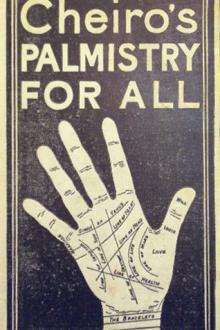The Diary - Samuel Pepys (red white and royal blue hardcover txt) 📗

- Author: Samuel Pepys
Book online «The Diary - Samuel Pepys (red white and royal blue hardcover txt) 📗». Author Samuel Pepys
John Vaughan, M.P., the celebrated lawyer, who is frequently mentioned in the Diary. He took an active part in the proceedings against Lord Chancellor Clarendon, and was rewarded with the Chief Justiceship of the Common Pleas in May, 1668, when he was knighted. ↩
Samuel Sorbière’s original work was published at Cologne in 1667, and entitled Relation d’un Voyage en Angleterre. It was afterwards translated into English. ↩
Clerk of the Council. ↩
“You cannot have forgot what happened to that ugly Beau Bovey, in the time of King Charles the Second:
“ ‘Bovey’s a beauty, if some few agree
To call him so; the rest to that degree
Affected are that with their ears they see.’ ”
He is mentioned by Oldham in his Imitation of Boileau:
“Gold to the loathsom’st object gives a grace,
And sets it off, and makes ev’n Bovey please.”
And in a note we find this description of Bovey—“An old battered court-fop of those times.” —B. ↩
See note 4023. ↩
On the site of the present Buckingham Palace and gardens. Originally a garden of mulberry trees, planted by James I in 1609 with the intention of cultivating the manufacture of English silks. ↩
In 1666 the site of Merton, alias Martin Priory, was conveyed by Ellis Crispe to Thomas Pepys, of Hatcham Barnes, Master of the Jewel Office to Charles II and James II. —Manning’s Surrey. —B. ↩
Henry Alcocke. ↩
There is a farthing token of “Edw. Nourse next the Bull in Bishopsgate Street, 1666” (Boyne’s Trade Tokens, ed. Williamson, vol. i, 1889, p. 534). ↩
Bishop Stortford. ↩
See note 3667. ↩
John Pepys and Mr. Jackson. ↩
John Hollins, of Medley, in Yorkshire; admitted a pensioner of Magdalene College, March, 1651. —B. ↩
John Peachell, afterwards master. ↩
The meditations on death, and prayers used by Charles I shortly before his execution, are printed at the end of the Είκων βασιλική. ↩
Epping Forest. ↩
The palace of Theobalds, where James I died. ↩
Juste au corps. ↩
Sir John Shaw’s Flanders hemp was rejected by the Navy Commissioners. William Bodham, writing from Woolwich Ropeyard, May 12th, 1668, says:
“There are 15 or 16 tons of Sir John Shaw’s Flanders hemp thrown by and refused; it must be weighed and taken away before he can tell what the net will be, and make out bills. Asks orders how to rate a portion of it, as out of 35 tons 15 or 16 were ejected.”
Calendar of State Papers, 1667–68, p. 387↩
Afterwards Sir Robert Sawyer, Attorney-General, ancestor of the Earls of Carnarvon, who inherit High Clere from him. —B. ↩
John Donne, D.D. (1573–1631), was brought up as a Roman Catholic, and spent his early life as a courtier, being for a time secretary to Lord Keeper Egerton. He was forty-two years of age when he took orders. In 1621, five years after ordination, he became Dean of St. Paul’s. ↩
John Lambert, the parliamentary general, was born at Calton Hall, in the parish of Kirkby-Malhamdale, in Yorkshire, September 7th, 1619, and married September 10th, 1639, Frances, daughter of Sir William Lister, of Thornton, his neighbour, who seems to be the Lady Lambert of whom Pepys speaks (History of Malham, 8vo., 1786, Appendix, p. 18). His wife and two of his daughters were with him in 1673 during his confinement in Plymouth Sound (see note 51). ↩
Mersenne’s Harmonie Universelle. See note 3973. ↩
See August 1st, 1667. ↩
A tragicomedy by Beaumont and Fletcher. See note 1248. ↩
See September 3rd, 1661. ↩
She died January 15th, 1757, aged ninety-six! —B. ↩
Evidently adopted as a cant expression. The woman here alluded to was a procuress well known in her day, and described in the Tatler (No. 84) as “the celebrated Madam Bennet.” We further learn, from the Spectator (No. 266), that she was the Lady B. to whom Wycherley addressed his ironical dedication of The Plain Dealer, which is considered as a masterpiece of raillery. It is worthy of remark that the fair sex may justly complain of almost every word in the English language designating a woman having, at some time or another, been used as a term of reproach; for we find Mother, Madam, Mistress, and Miss, all denoting women of bad character; and here Pepys adds the title of my Lady to the number, and completes the ungracious catalogue. —B. ↩
Pepys here alludes to Sir Nicholas Cully (Nokes’s character) in Etherege’s Comical Revenge, or Love in a Tub. —B. ↩
In Cannon Row. ↩
What this story may have been it would now be futile to inquire. It evidently gave great amusement to Pepys. See May 14th and 28th, 1669, post. —B. ↩
The body of the church was destroyed in the fire of 1666, and rebuilt; but the tower only needed repair. The works were completed in 1670. ↩
The rough notes for the journal from this time to the 17th of





Comments (0)